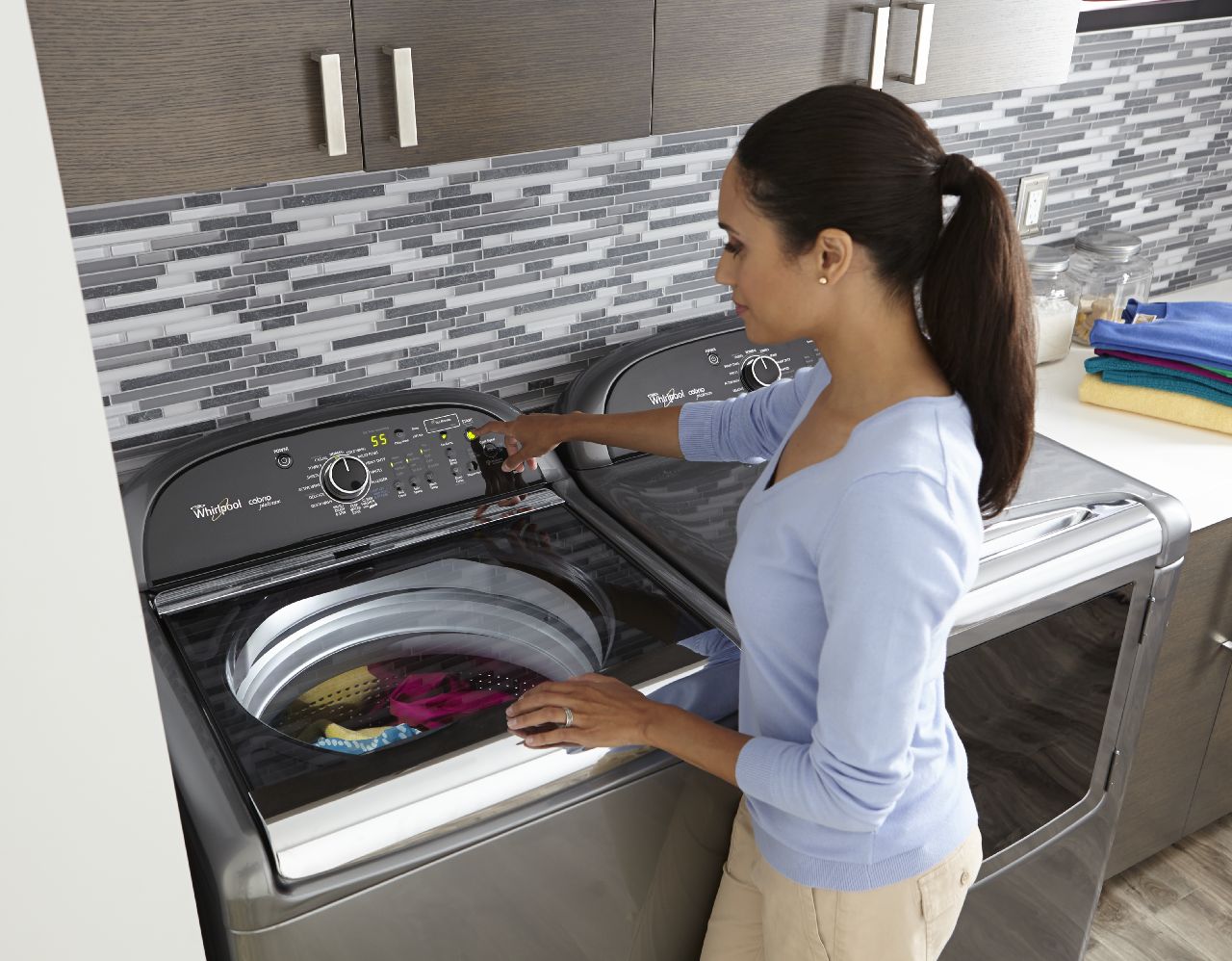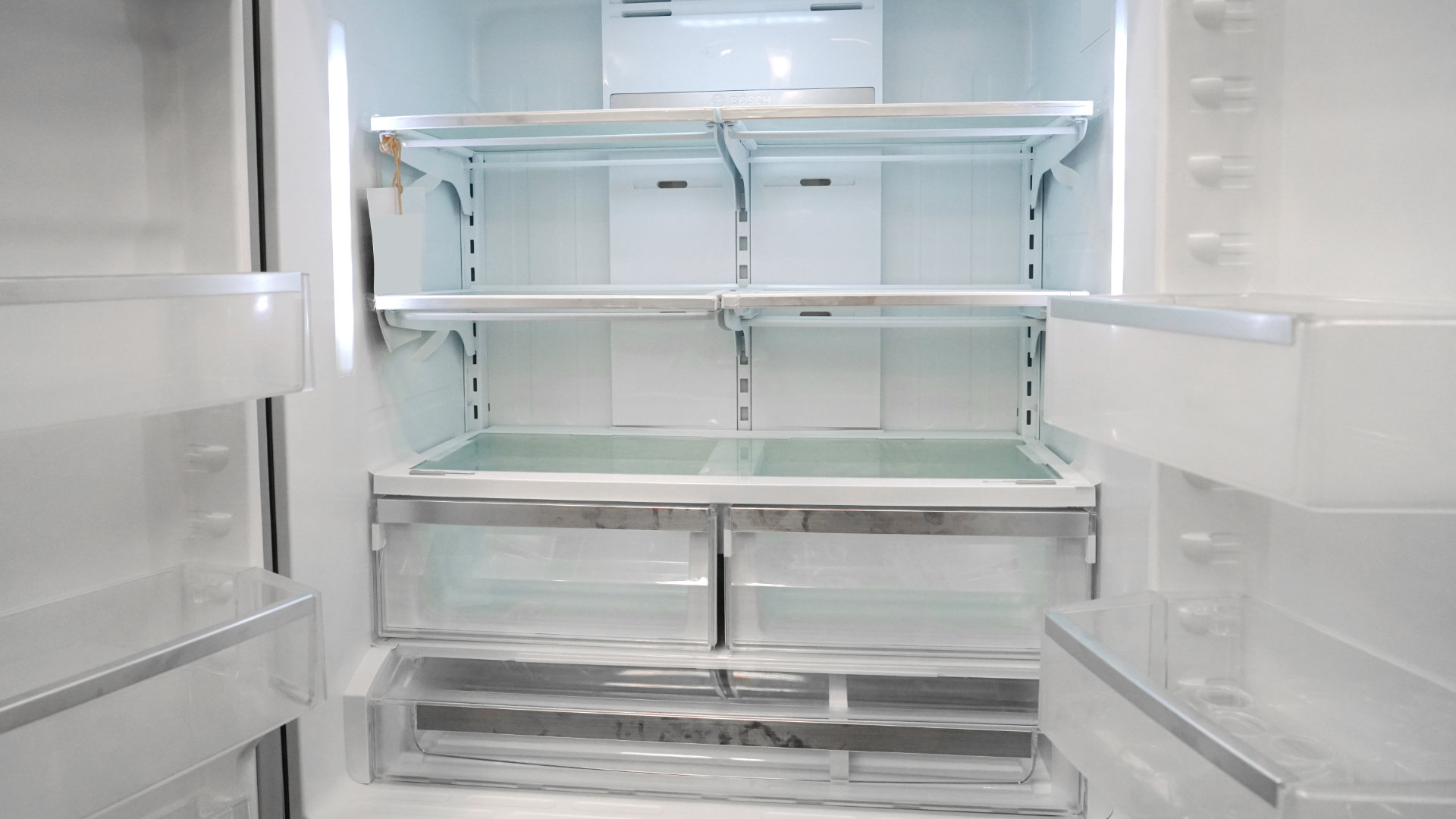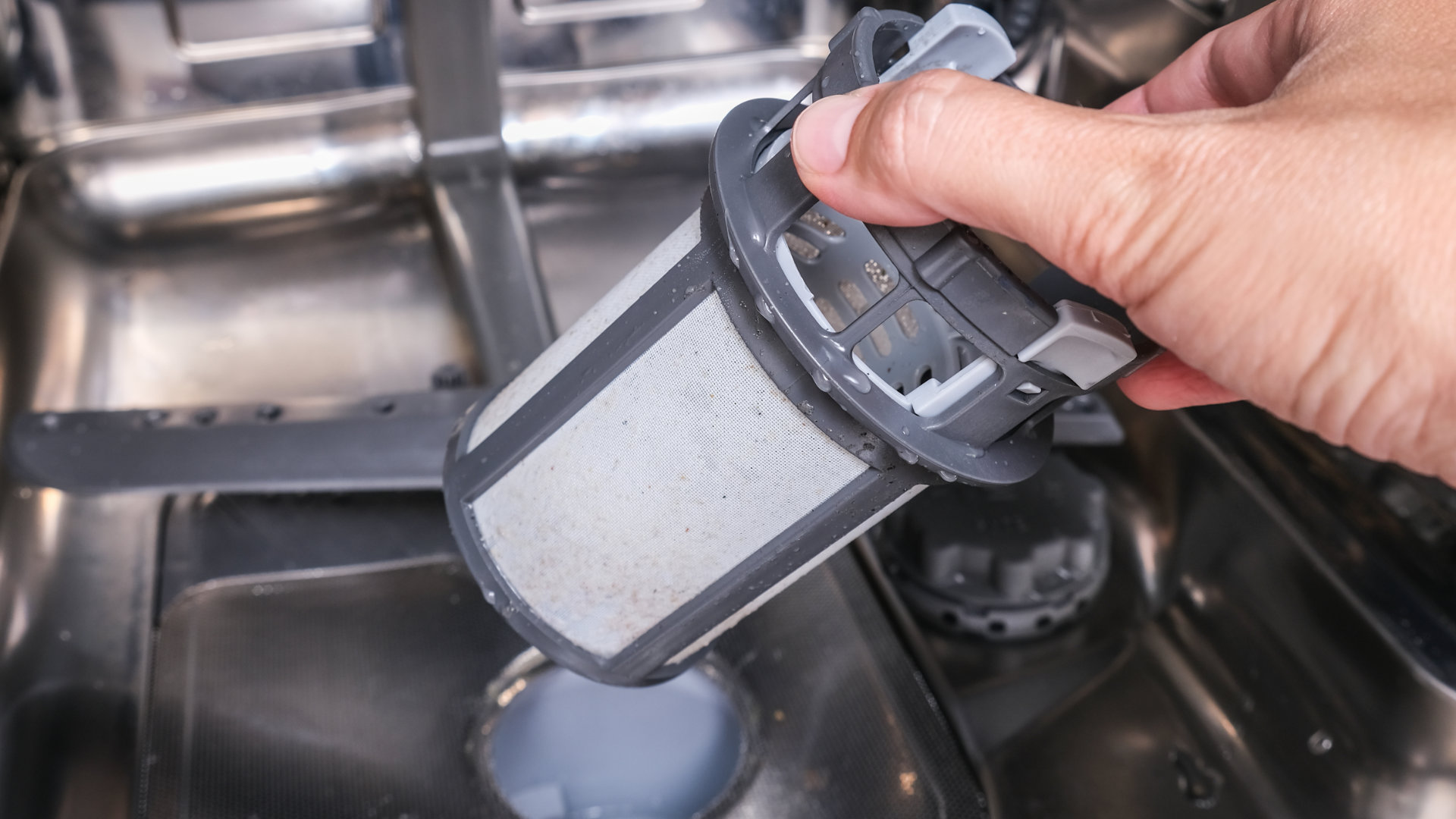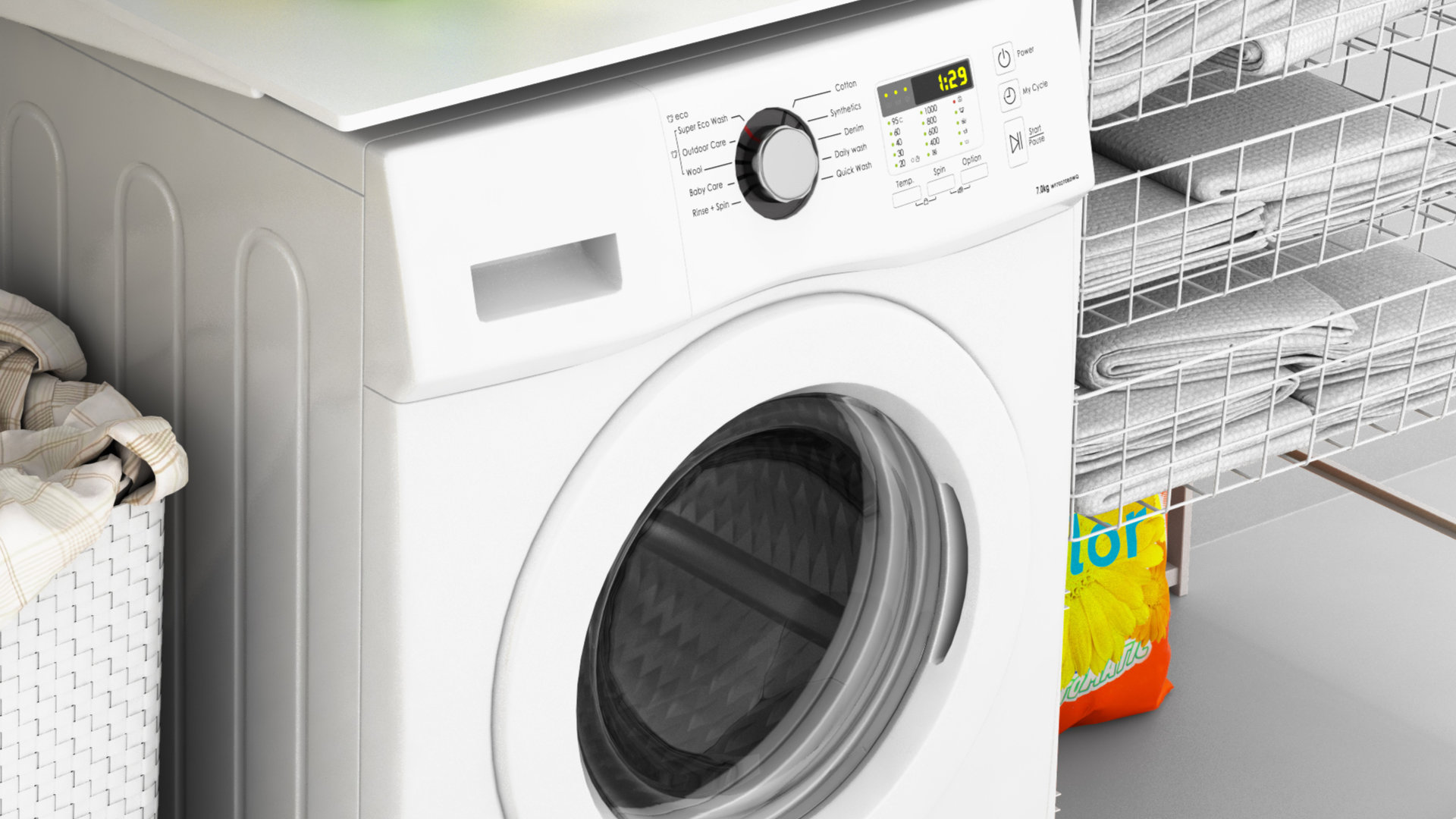
Sometimes it is necessary to move one’s washing machine. There are a number of reasons that can lead to moving a washing machine or removing it from its current location, but the task is a serious one no matter what the cause. You may be removing the machine to investigate a malfunction, repair a loose wire, or replace a broken part. It may be that you’ve purchased a new washing machine and it’s time to retire the old one. Or perhaps you’re simply moving to a new home and taking your favorite washer with you.
Whatever the reason, disconnecting your washing machine is no small task. Every washer is connected to the wall in at least three or four different places and with different types of attachment. You will need to carefully disconnect each one before the washer can be moved out of its slot and worked on or loaded onto a dolly for removal.
Always Start by Unplugging the Washer
The first step in washing machine repair, maintenance, or handling is always to unplug the appliance. You don’t want to risk shorting out the machine, starting it by accident, or electrocuting yourself while working on the parts. When removing a washing machine, there’s also a certain risk of leaks or spraying water, and you don’t want an active electrical connection should that happen.
– Remove the Plug
Start by removing the plug from the wall. Even if it is stuck firmly and hard to pull out, do not allow your fingers to slip under the plug and touch the metal prongs. Pull steadily and wiggle the plug if necessary to remove it from the wall.
– Hang the Plug End
Once you have the plug removed, use a twist tie or clamp to clip it to itself. This should ensure that the plug end does not drag on the floor or fall into a puddle while you work or move the unit.
Shut Off the Water
Your next step is to reduce the chance of a mess or potential water damage to the electronic parts. Do this by shutting off the water that would normally flow into your washing machine. This can be done in one of three ways. Shutting off the water to the hookup valves, closing the hookup valves themselves, or shutting off your entire water main.
– To the Washer
Some homes have an exposed valve that shuts off the washing machine connections before the pipes reach the specific valves. Just like the valve at the back of your toilet or underneath a sink. If your home has one of these, you can easily shut off the water to your washer by turning it closed during repairs.
– At the Valves
If you don’t have this single convenient valve, you may be able to shut off the water at the connection valves that lead from the wall to the washer. However, these can rust closed after several years with the same washer connection and may not turn when you want them to.
– From the Main
If all else fails, you can turn off the water to your entire home at the water main as you would for major bathroom or kitchen plumbing repairs.
Give Yourself Some Room
Next, give yourself a little room to work with. If you can pull your washer out away from the wall so that you can stand behind it and/or bend over it and see what you’re doing. With some laundry rooms, you may need to pull the dryer away first. If you move the dryer, remember to go through similar safety protocols.
Remove and Empty the Drain Line
Once you’ve got room to work with, it’s time to remove the drain line. This is the hose or pipe through which your washer empties itself when draining.
– Locate the Drain Line
The drain for a washing machine is usually an unattached hose-shaped like a U that either screws in or sets loosely into a drain pipe that is part of the home’s washer hookups. Find this hose and its method of disconnection. In many cases, you will simply need to lift it out of an upright open PVC tube.
– Lay a Bucket on the Ground Behind Your Washer
Before you disconnect the drain line, place a bucket on the ground behind your washer. The drain line might not be completely empty and may gush out retained water when you remove and drop it. The bucket is there to help you avoid making a mess.
– Pull the Drain Line & Set in the Bucket
Pull the drain line and quickly drop it into the bucket. Shake the line and try to straighten it out over the bucket to empty it as complete as possible. You may also want to clip the drain line end to itself so it, too, does not drag when you move the machine.
Disconnect the Supply Lines
Next is the supply lines. These are the hot and cold water connections that attach to the valves in the wall. You’ll need them disconnected before you can remove the washing machine and they are often the most difficult to break loose due to corrosion and sediment buildup over time.
– Locate the Water Supply Lines
The water supply lines are two probably metal hoses connected firmly to two valves in the wall. You will want to disconnect them at the wall.
– Close the Valves
If you haven’t already, do your best to close these valves. They may be corroded stuck in the open position so be prepared to use pliers and great force. If they really won’t close, turn off the water at a more distant point and prepare for a little mess.
– Loosen the Connections
Use a wrench or pliers to disconnect each supply line hose from its valve. This, too, may be a difficult task requiring force and possibly a little loosening agent like CLR or a professional plumbing formula.
– Drain Into Bucket
Once you have the hoses clear, also drain these into your bucket as they are likely to have some lingering water inside.
– Clear of Obstructions
Finally, take a close look at your supply line and valve connections. Are the apertures nearly blocked with corrosion or scale buildup? If so, use a wire brush and cleaning agent to break up the obstructions and clear it out.
Remove Your Washing Machine
Finally, you are ready to remove your washing machine with all the connections removed.
– Pull Out for Repair Work
If your goal is to repair the washer with it fully disconnected from the wall, now is the time to turn it toward you or make yourself more room to work around and behind the unit.
– Load onto Dolly for Removal
If your goal is to fully remove or relocate your washing machine, we suggest loading it only a rolling dolly which will allow you to move the heavy appliance without hurting your back or scraping the floor. Be careful not to drag the connections. A few clips can keep the power cable and hoses looped up onto themselves and off the floor.
—Of course, for many repair solutions, disconnecting the washing machine is only the beginning. Contact us for more information on washer repair or to consult on repair services that your washing machine needs.

How to Reset a Whirlpool Refrigerator Ice Maker

6 Reasons Your LG Refrigerator Is Not Making Ice

Kenmore Fridge Ice Maker Not Working? 5 Ways to Fix It

How to Remove Fish Smell from Your Refrigerator

How To Fix Bosch Dishwasher E24 Error

Troubleshooting a Whirlpool Dishwasher Not Draining

Why Is Your Fridge Water Not Working, but Ice Is?

How to Fix the E15 Bosch Dishwasher Error Code

How Much Power Does a Microwave Use?

How to Properly Clean Refrigerator Coils

How to Fix an LG Washer Showing OE Error Code

Troubleshooting a GE Dishwasher with No Power and No Lights

10 Reasons Why Your Bosch Dishwasher Won’t Start

Troubleshooting the F5 Error Code with a Maytag Washer


